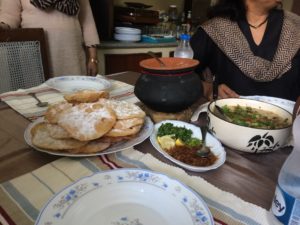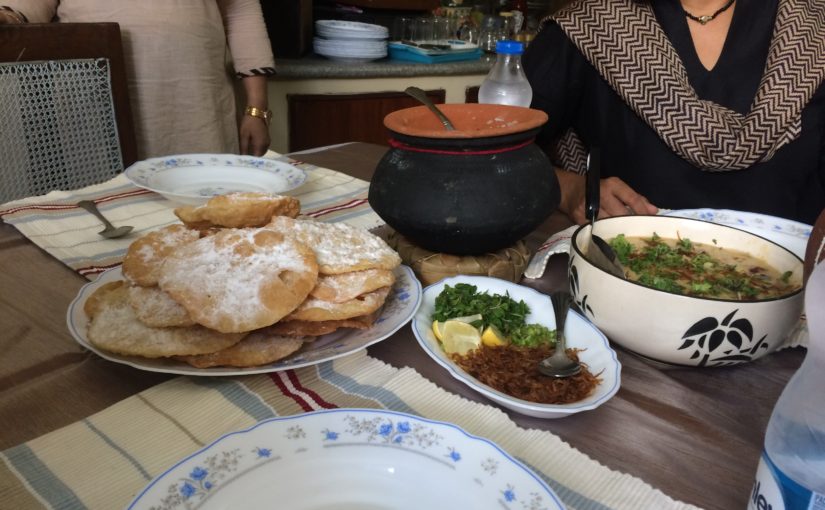For many, the beginning of October means “sweater weather,” pumpkin pie and a time when posting dancing skeletons on your timeline is deemed socially acceptable. For the Muslims of India, however, the beginning of October marks the beginning of a 10-day mourning for the martyrdom of Imam Hussain (a grandson of the Prophet Muhammad) and his family.

For 10 days, lamentation rituals are performed around a fire at mourning houses called Ashur Khanas, and celebrations do not occur.
Muharram is also responsible for the association of “fire-walkers” with India. On the eve of the tenth day, the coals from the fire pit are walked over first by a goldsmith, followed by all ages of devotees. They make it appear so peaceful and simple. It has caused some bystanders to attempt the feat themselves, usually with painful results.
In Hyderabad, on the final day of Muharram religious symbols called alams symbolizing the martyrs are taken from the Ashur Khanas and placed on the back of an elephant which is paraded through town.
At various points on the route, the elephant bearing the precious relics halted to receive special offerings of coconuts wrapped in green cloth. Once the alams complete their journey, they are ritually bathed and taken back to special storing rooms until the following year. Washing the elephant’s feet with milk shows appreciation for the elephant’s service as bearer of the alams.
In addition to these rituals, it is also a day to be at home with one’s family, for which a special meal is prepared. When the tenth day arrived, my professor kindly invited me to his home to experience these traditional foods.
Traditionally, the meal on the tenth day of Muharram is entirely vegetarian. There are two main reasons for this. The meal is composed of food items the martyrs would have likely been carrying on their flee into the desert. In addition, the tenth day of Muharram is said to also have been the date the floods receded in Noah’s time. Since Noah possessed only one pair of each animal, they would not have been able to slaughter any for meat.
The main food served was called katcheri, a mix of millets and grains which are seasoned, boiled and ground into a porridge-like substance eaten with caramelized onion, lime, garlic and fresh mint leaves as garnish. For something so simple, it tasted absolutely amazing.
I especially enjoyed it when paired with another essential Moharram food, rote. Resembling a slightly sweet dense pancake, this bread is traditionally prepared in the home, but cooked at a bakery in town. Nowadays however, a more cookie-like version is available in bakeries ready made. I was fortunate enough to have the opportunity to try both.
In addition to these two items, we had curd rice (rice mixed with unsweetened yogurt, coriander leaves and various other spices), a thin fried bread topped with powdered sugar and a special drink kept in a clay pot. It was a very fragrant drink containing sugar, water and slivered almonds among other ingredients served in a small glass.
Sitting at the table and enjoying this delicious food and good company reminded me of how incredibly blessed I am to be have such opportunities. My time abroad continues to increase my understanding and acceptance and I revel in my new discoveries of Indian culture. The fact that my professor would invite me to his house to share in a part of his culture is something I will always cherish.
